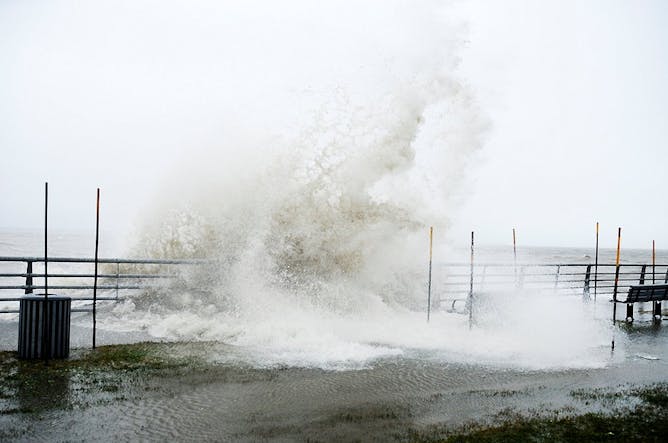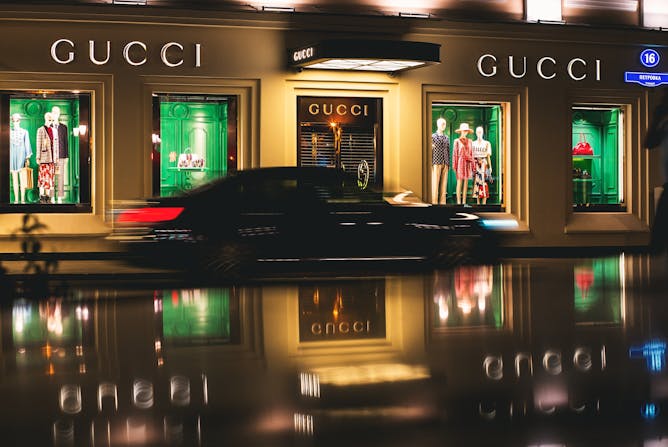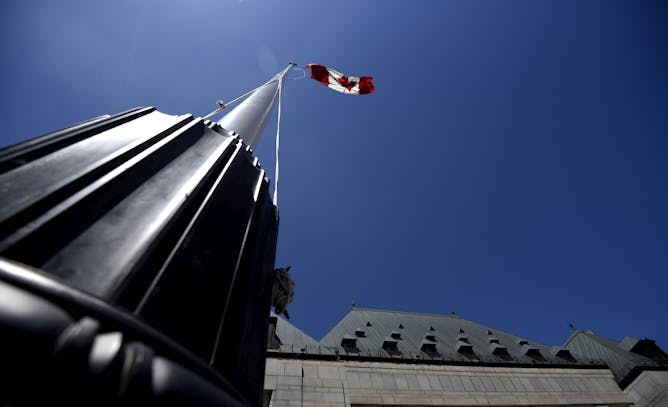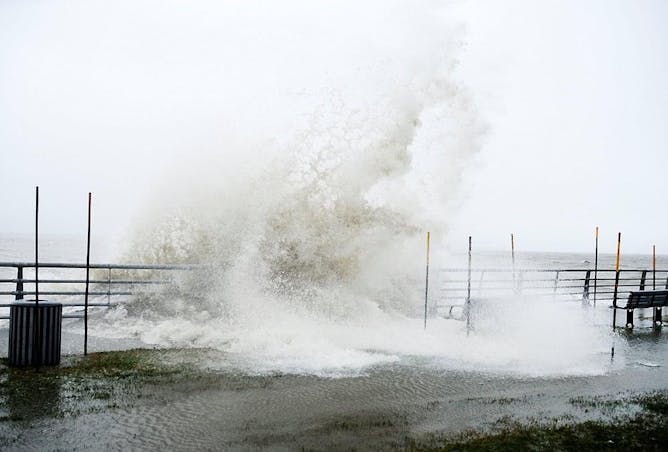|
It’s been over a year since the Proud Boys were designated a terrorist entity by the Canadian government. They disbanded three months later after stating that they weren’t terrorists or white supremacists. Some members refused to acknowledge the group’s dissolution, and remained active online.
The Canadian Proud Boys had never been a cohesive and organized group, and its former leadership, while no longer (publicly) affiliated with the group, maintains access to far-right online spaces.
Today in The Conversation Canada, Mackenzie Hart and Garth Davies at Simon Fraser University write that labelling the Proud Boys a terrorist group may have restricted their activities in Canada. But, they caution, “the lack of direct impact on levels of violence does demonstrate the breadth and de-centralized nature of far-right extremism.”
Also today:
All the best.
|

With the so-called “freedom convoy” promising to return to Ottawa over the summer, its association with neo-fascist groups brings them back into the spotlight.
(Shutterstock)
Mackenzie Hart, Simon Fraser University; Garth Davies, Simon Fraser University
It’s been over a year since the Proud Boys were labelled a terrorist entity, but that hasn’t affected extremist activities in Canada.
|

Exceptional high tides hit eastern Québec in 2010 and 2016.
(Groupe Facebook Grandes Marées 2010)
Cédric Chavanne, Université du Québec à Rimouski (UQAR); Daniel Bourgault, Université du Québec à Rimouski (UQAR); Dany Dumont, Université du Québec à Rimouski (UQAR)
Popular belief suggests the highest tides in the St. Lawrence River are reached around the equinoxes. In truth, they arrive close to the solstices.
|

Despite a downturn in sales driven by the pandemic, luxury products are being sold with speed.
(Dima Pechurin/Unsplash)
Jordan Foster, University of Toronto
Across these retail places, cultural workers like stylists and visual merchandisers colour our purchases. How do they do it? I aimed to find out.
|

The Canadian flag flies in front of the Supreme Court of Canada in Ottawa in 2021.
THE CANADIAN PRESS/Justin Tang
Geoff Callaghan, University of Windsor
The notwithstanding clause is both historically appropriate and democratically desirable. Excising it would make our Charter of Rights and Freedoms more American. Is that really where we want to go?
|

Graffiti is seen on the outside of the Capital City Bikers’ Church in Ottawa in May 2022.
THE CANADIAN PRESS/Sean Kilpatrick
Carson Phillips, Gratz College
Efforts to prohibit Holocaust denial will prevent hate speech and fascism, and protect the history of the Holocaust.
|

De grandes marées ont frappé l'Est du Québec en 2010 et en 2016.
Groupe Facebook Grandes Marées 2010
Cédric Chavanne, Université du Québec à Rimouski (UQAR); Daniel Bourgault, Université du Québec à Rimouski (UQAR); Dany Dumont, Université du Québec à Rimouski (UQAR)
Il existe une croyance populaire que les marées les plus hautes sont atteintes autour des équinoxes dans le fleuve Saint-Laurent, alors qu’en réalité, elles le sont autour des solstices.
|
Ukraine Invasion
|
-
Frank Ledwidge, University of Portsmouth
Ukraine is losing this war at the moment. The west needs to massively step up its military aid to the country.
-
Radityo Dharmaputra, Universitas Airlangga
Despite vague results of what the shuttle diplomacy will contribute to the world, at least the visits resemble Indonesia’s, if not Jokowi’s, own interest.
|
|
Arts
|
-
Freya Jarman, University of Liverpool
Everyone knows the Elvis story, but what’s less known is the story of the Black women singers and musicians who forged the way.
|
|
Environment + Energy
|
-
Chamu Kuppuswamy, University of Hertfordshire
A case brought to the European Court of Human Rights could pressure countries to leave.
|
|
Politics
|
-
Darren Lilleker, Bournemouth University
Over the course of an extraordinary 24 hours, dozens of Conservative MPs have written to Boris Johnson to announce their resignation from his government following multiple scandals. Many of these letters…
|
|